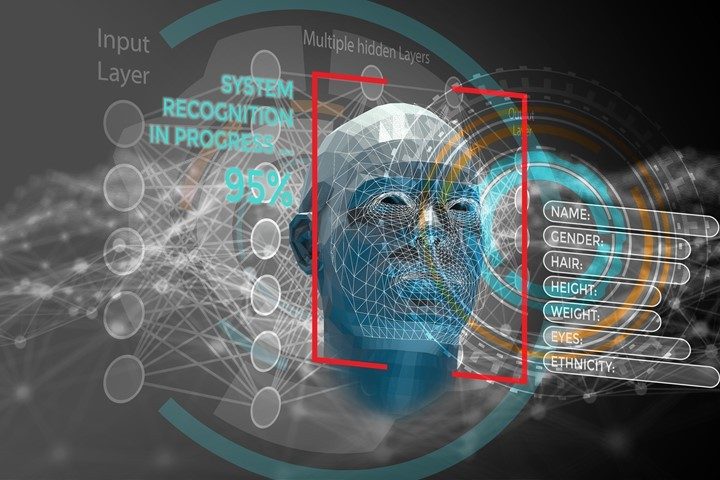
The Biden administration is adopting controversial facial-recognition technology and other intrusive surveillance tools to process the backlog of thousands of migrants at the U.S.-Mexico border, according to a new report.
U.S. Customs and Border Protection (CBP) has distributed an app called “CBP One,” which uses facial-recognition technology to compare photos of migrants with various refugee databases, wrote the Los Angeles Times on Friday.
Citing CBP legal disclosures and interviews with privacy analysts, the Times reported that in addition to tracking faces, the app uses geolocation and cloud technology to create databases of personal data that can be accessed by other law-enforcement agencies and stored for up to 75 years,
According to the report, the Department of Homeland Security’s (DHS) assessments describe the app as a necessary measure, since those who are seeking protection in the United States but have been “forced” back into Mexico under Trump policies and those whom the new administration has largely kept, cannot be “processed all at once.” Officials maintain the app offers a “safe and efficient” technical solution.
The Times reminds us that under the Trump administration, some 70,000 asylum seekers were required to wait south of the border for immigration hearings in the United States. As the coronavirus emerged, the Trump administration closed the border to nonessential travel and summarily expelled migrants, including those seeking asylum. Border officials have since carried out roughly 800,000 expulsions. President Biden welcomed them “back,” but with a catch — asylum seekers may stay in America, but they need to register with the tracking app.
DHS officials call the technology a “smart border” innovation they believe is more effective than the previous administration’s crude walls and bans. In other words, putting electronic leashes on the newly arrived is “more humane” and somehow “smarter” than simply keeping them out.
The DHS has been granted emergency approval to use the app to process users’ information in advance of arrival in the United States. This clearance from the Office of Management and Budget allowed it to bypass the usual public notification process required before it launches a new program.
U.S. border officials have already enlisted international and nongovernmental organizations, such as the United Nations refugee agency, known as UNHCR, to use the app. The organizations identify asylum seekers in Mexico who were subjected to the Trump immigration policies and then submit their biographic and biometric information, including photographs, through the app to CBP.
It is noted that submission of biometrics is voluntary, but at the same time, CBP primarily uses facial recognition to verify a person’s information and determine whether the asylum seekers will be allowed to enter the United States, which means that if the immigrant wants their case processed, they have no choice but to submit faceprints.
Implementation of the app arrives just as the crisis at the border is peaking, with 110,000 single adults trying to cross in April alone — the highest number in a decade.
Civil liberties and privacy experts, however, sounded alarms about the amount of data the app collects on already vulnerable immigrants.
“CBP’s use of face recognition poses enormous risks to privacy and is another step down a dangerous path,” American Civil Liberties Union (ACLU) Senior National Security Attorney Ashley Gorski told the Times. “Whenever the government acquires a person’s faceprint, it creates a risk of persistent surveillance, where the government could identify and track people’s movements without their knowledge.”
Despite the privacy concerns raised by the ACLU, a CBP spokesperson told the Times that the agency is “committed to protecting all sensitive information in its possession.”
Chris McGrath of the United Nations refugee office expanded on the CBP agency’s efforts by saying: “The system is currently only used by UNHCR in exceptional cases — and only with the individual’s full informed consent – to retrieve a misplaced ‘A-number’ by using a photo to match with data already collected by the US government.”
The mobile application CBP One was launched by DHS in February for travelers in order to ease the interaction with border authorities.
“CBP has designed a one-stop portal of its mobile applications and services that will offer travelers a secure and convenient option to provide information related to their arrival to or departure from the United States,” said Diane J. Sabatino, deputy executive assistant commissioner of field operations, and added that CBP is working to determine how successfully to leverage “emerging technology” in times of international travel bouncing back.
Last week, the Biden administration formally terminated a Trump-era Migrant Protection Protocols (MPP), better known as “Remain in Mexico” program. MMP was a cornerstone of Trump’s border management policy; it required potential asylum seekers to stay in Mexico to wait out the result of their case in U.S. immigration court.
Biden also asked Congress to pass legislation known as the U.S. Citizenship Act of 2021, which would provide a way for an estimated 11 million undocumented people to stay in the United States.




